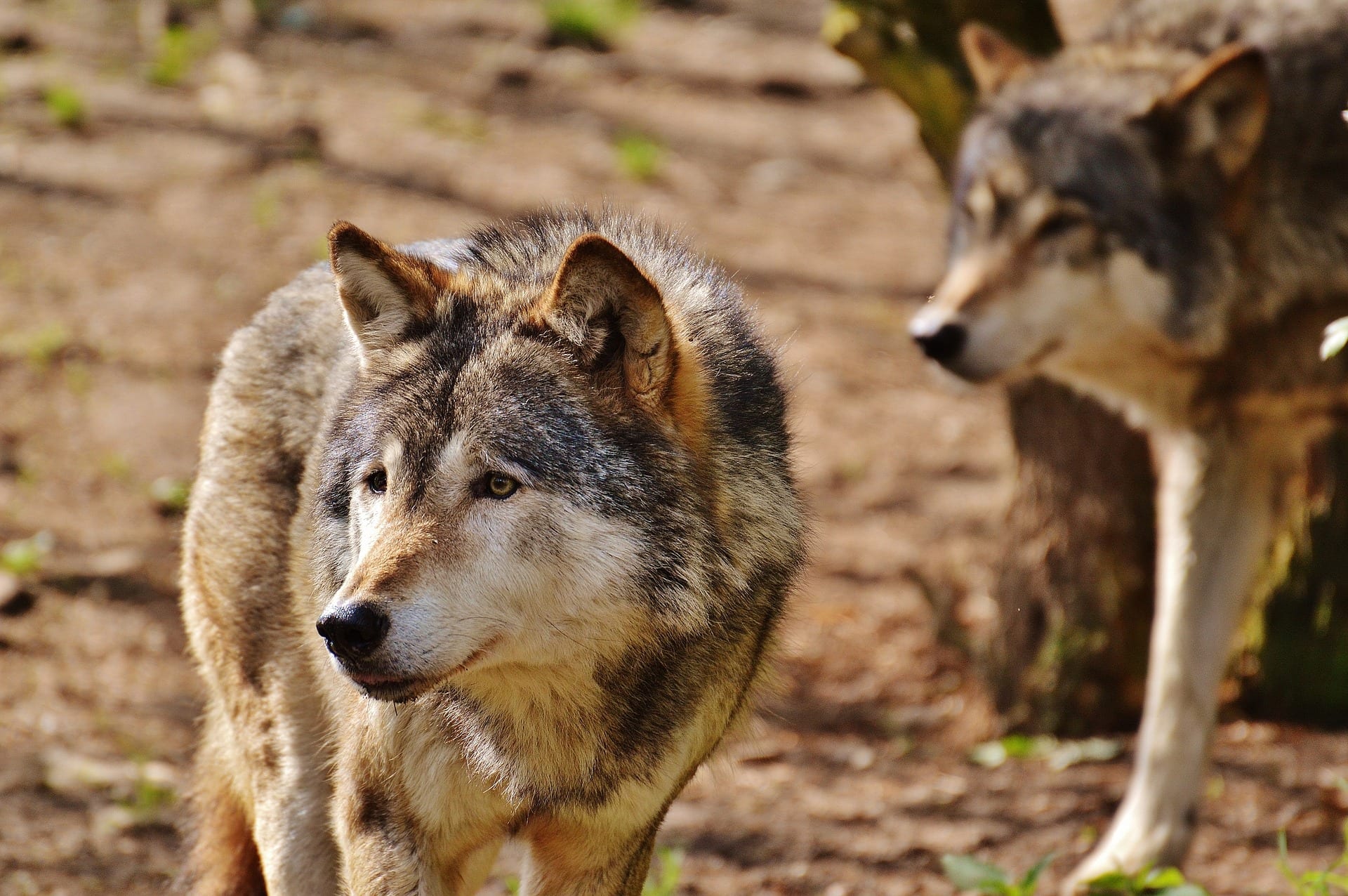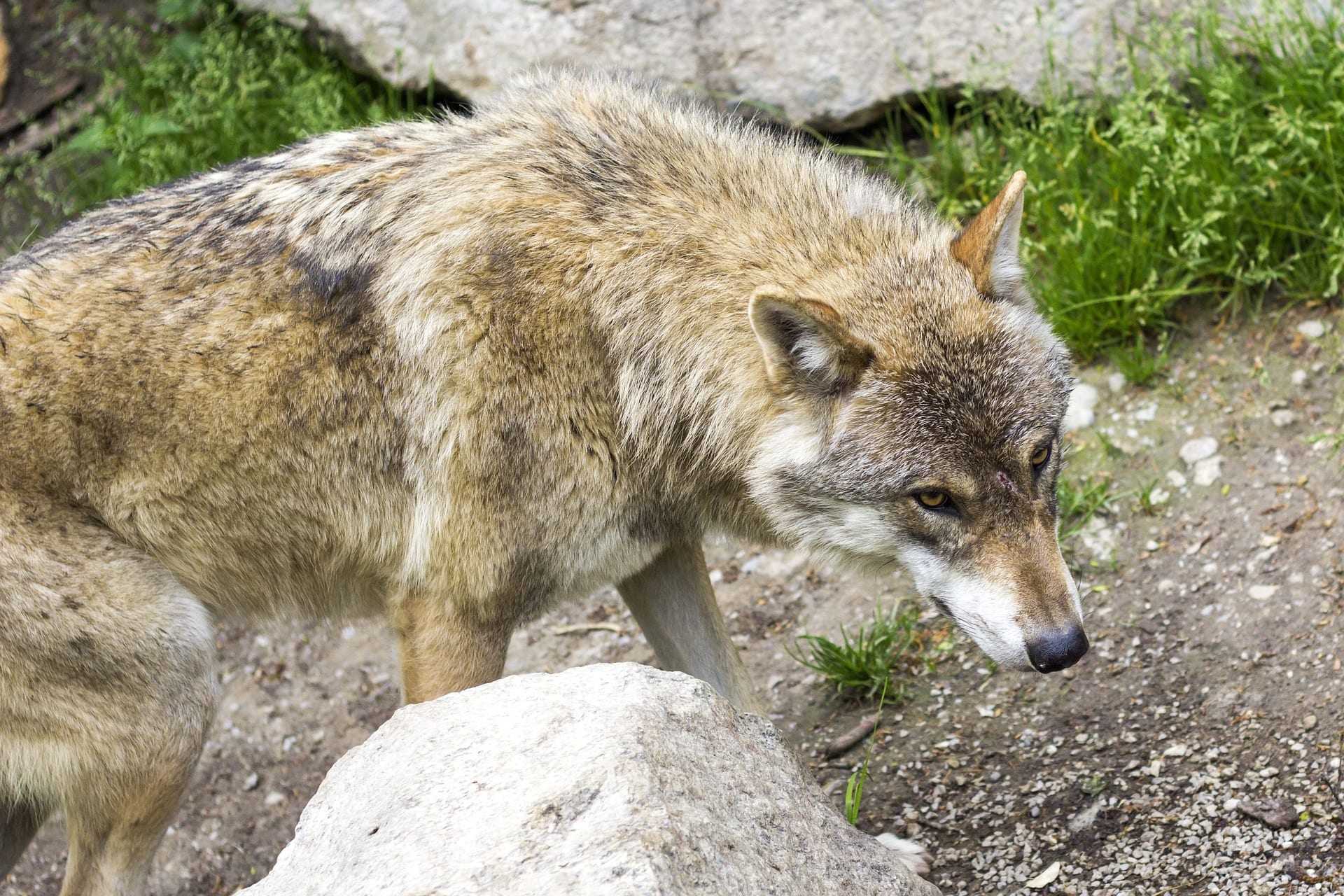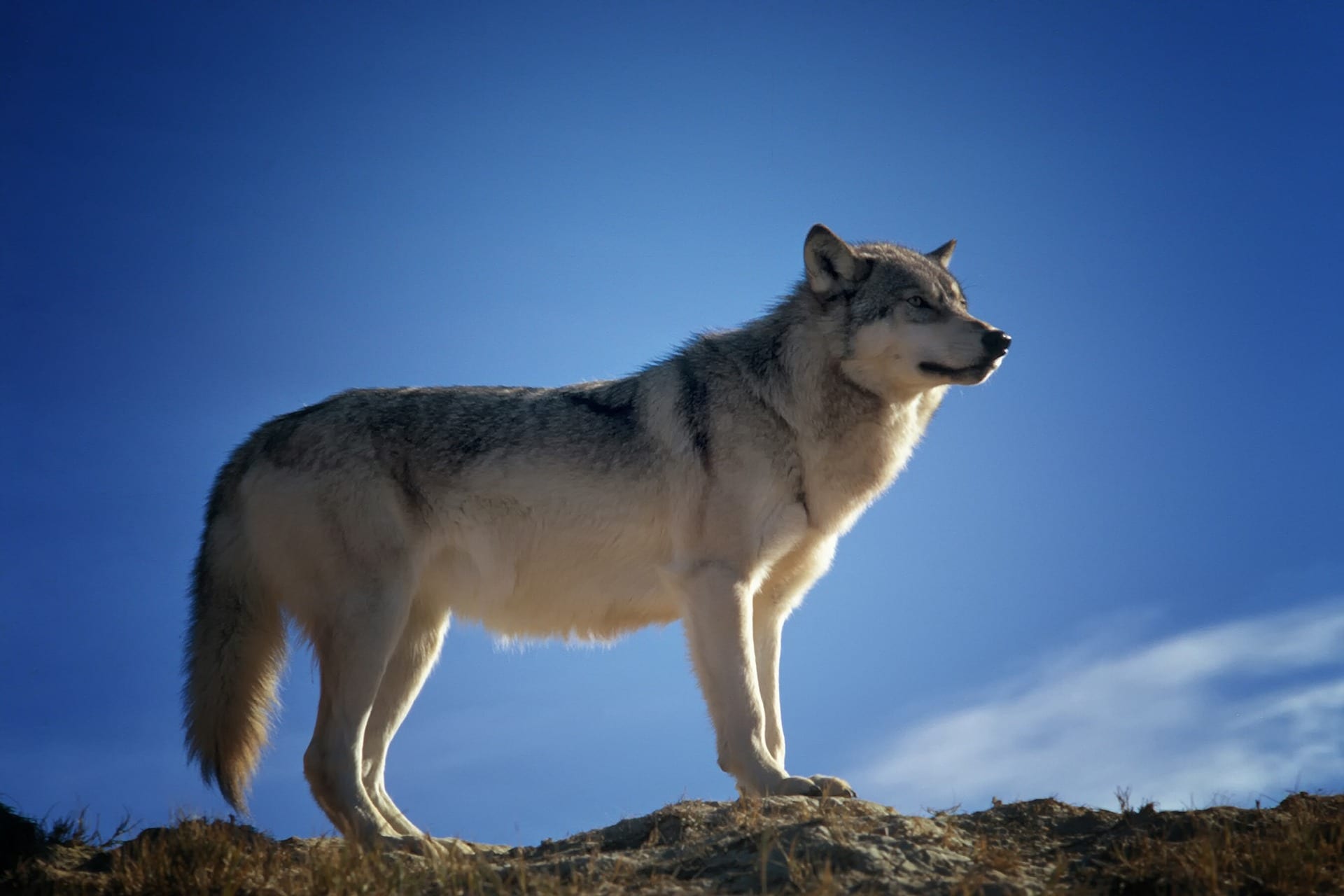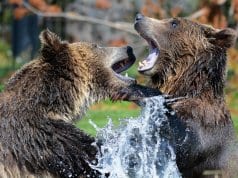Domestic dogs and wolves are very similar animals. They are evolutionary cousins, who share a number of the same physical, biological and behavioral traits. They even look alike in some cases.
But dogs are not wolves – they are both distinct species. In fact, dogs and wolves both exhibit a number of very important differences. We’ll talk about six of the most important differences between dogs and wolves below.
Reproductive Cycle
Wolves and dogs exhibit very different reproductive cycles.
Like many other wild animals, wolves give birth during a well-defined time of year – typically the spring. This is important because it is much tougher for wolves to find enough food during the winter than it is during the spring, summer or fall. So, by giving birth in the spring, wolf mothers have plenty of time to raise their young before winter arrives.

On the other hand, dogs live alongside humans. This means they don’t have to catch their own food. Most dogs simply eat from a bowl on the kitchen floor. This means that dogs may breed at any time of year, as their puppies will have just as much food in the winter as they will in the spring, summer or fall.
Predatory Sequence
Some dog breeds have lost the instincts that wolves use to catch prey.
Wolves and most other predators employ a consistent set of behaviors when trying to catch prey. Scientists call these behaviors the predatory sequence.

The predatory sequence for wolves begins when they stark sneaking up on their prey. This is called eye stalking. Once close enough, they’ll start chasing the animal and try to grab it with their teeth, using something called a catch bite.
Once a wolf captures its prey, it will employ a crushing bite to subdue the animal. This is called a kill bite. Finally, once their prey is dead, they’ll begin using a dissecting bite to access edible portions of the carcass.
However, humans have eliminated some of these steps in some dog breeds. Sometimes, humans have done this to make better pets, but they’ve also done so to make some dogs better at hunting, tracking or performing other tasks. Labrador retrievers, for example, no longer have a kill bite. This helps ensure that when they retrieve a bird their owner has shot, they will carry it gently in their mouths.
Self-Reliance
Dogs look to their owners for help, while wolves rely on themselves.
Wolves are wild animals, who must fend for themselves. By contrast, dogs are domestic animals, who live alongside humans.

This means that when wolves are faced with a challenge, they must figure out a solution for themselves. But dogs find it easier to simply entice their human to help in these cases.
For example, if a wolf comes upon a locked door, he may paw and bite at the door to open it. If he’s unable to do so, he’ll be out of luck. But if your dog encounters a locked door, he may paw at it for a moment, but he’ll likely just try to get your attention, so you’ll open the door for him.
This means that wolves are more self-reliant than dogs, but dogs probably live easier lives than wolves.
Differing Development
Wolves and dogs mature in very different ways.
Wolf puppies and dog puppies both have several similar traits. They both have floppy ears, big eyes and short snouts. These traits are thought to be an adaptation that encourages their parents to take care of them.

But wolves mature very quickly, and their parents will stop caring for them as much. Accordingly, adult wolves lack these types of features. But dogs often retain these juvenile features into adulthood.
Scientists call this phenomenon neoteny. This probably occurs in dogs because they continue to depend on humans (who are somewhat like their parents) for their entire lives. It may also be a reflection of human desires. Humans often think that floppy ears and big eyes are cute features, so breeders have tried to produce dogs with these traits.
Size Differences
While there are exceptions, wolves are generally bigger than dogs.
Dogs come in a remarkable variety of sizes. Chihuahuas may only weigh 4 or 5 pounds, while mastiffs and great Danes may reach 150 pounds or more. But the average dog probably weighs about 30 to 50 pounds.

Wolves, on the other hand, are usually larger. Even the smallest grey wolves usually weigh about 50 to 75 pounds, and the largest examples may exceed 175 pounds in weight. Wolves are also taller and longer than most dogs. Some wolves even measure more than 6 feet long from nose to tail.
The wolf’s long coat helps to make them look even larger than they are. This long coat not only helps to keep them warm, but it also helps them repel predators and threats too.
Dietary Differences
Although they both love meat, dogs and wolves have different diets.
Wolves occasionally eat berries or other plant matter, but they primarily feed on large mammals. This includes deer, moose, elk and other large herbivores living alongside them. In fact, wolves living in areas without many large herbivores often struggle to find enough food.
But dogs have lived alongside humans for tens of thousands of years. During this time, they stopped hunting large animals and instead started eating human leftovers. This includes not only meat, but plenty of fruits, vegetables and grains too. Dogs certainly love meat, but most modern dog foods also contain plenty of plant-based foods too.

Scientists used to think that dogs were the direct descendants of grey wolves, but new research indicates that this thinking was wrong. Instead, wolves and dogs share a common ancestor, which makes them evolutionary cousins, rather than parent and child species
But even though they aren’t as closely related as we thought they are, they still share a lot of important similarities. This makes the differences they have all the more interesting.
Can you think of any other differences between wolves and dogs? Let us know in the comments below.






![Red Angus Closeup of a beautiful Red Angus cowPhoto by: U.S. Department of Agriculture [pubic domain]https://creativecommons.org/licenses/by/2.0/](https://animals.net/wp-content/uploads/2020/03/Red-Angus-4-100x75.jpg)

